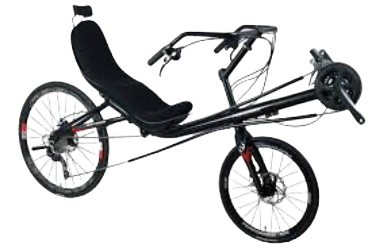Rediscovering Comfort and Efficiency: Exploring Recumbent Bikes

Recumbent bikes offer a unique and comfortable riding experience, challenging the traditional design of upright bicycles. Let's delve into the features, parts, and specifications that make recumbent bikes stand out in the world of cycling.
Frame and Construction:
Recumbent bikes feature a reclined seating position, with the rider's legs stretched forward. The frame is typically made of aluminum, steel, or carbon fiber, providing stability and durability. The low center of gravity and ergonomic design offer enhanced comfort, reducing strain on the rider's back and neck.
Wheels and Tires:
Recumbent bikes come with standard-sized wheels, usually ranging from 20 to 26 inches in diameter. The wider stance and lower center of gravity contribute to stability, especially during cornering. Tires vary depending on the type of recumbent bike, with options for road, touring, or off-road use.
Gearing:
Recumbent bikes may feature a wide range of gearing options, including internal hub gears, derailleurs, or even shaft-driven systems. This allows riders to choose the appropriate gearing for their riding style and terrain, whether it's cruising on flat roads or tackling steep hills.
Brakes:
Most recumbent bikes are equipped with standard rim brakes or disc brakes for reliable stopping power. Disc brakes offer better modulation and performance in wet conditions, making them suitable for all-weather riding.
Measurements and Statistics:
| Specification | Range |
|---|---|
| Overall Length | 60 to 80 inches |
| Overall Width | 25 to 35 inches |
| Weight | 25 to 40 pounds |
Special Features:
Recumbent bikes often come with additional features such as adjustable seating positions, under-seat steering, and built-in suspension systems for added comfort. Some models may also feature cargo racks or fairings for touring or commuting purposes.